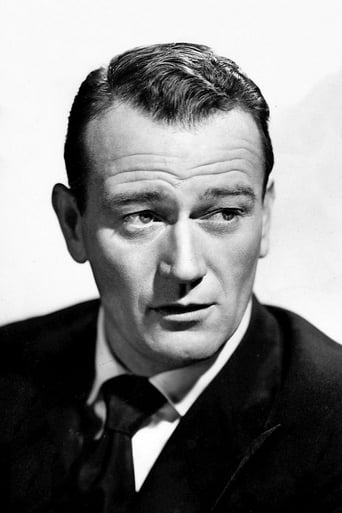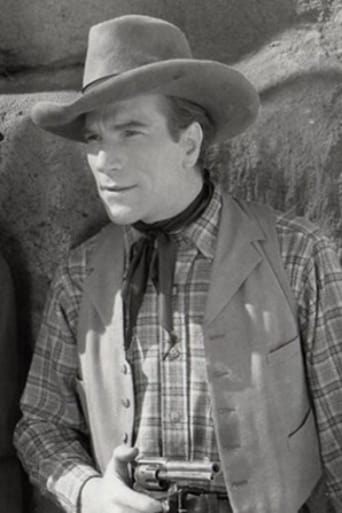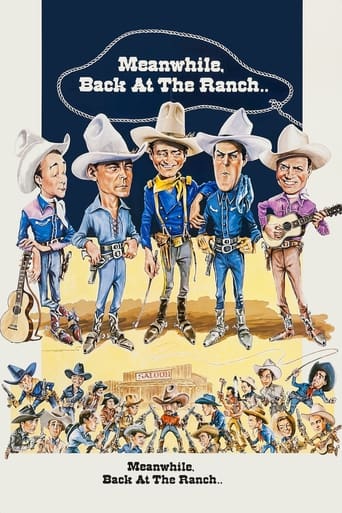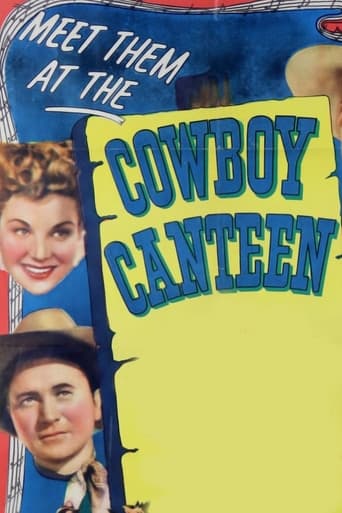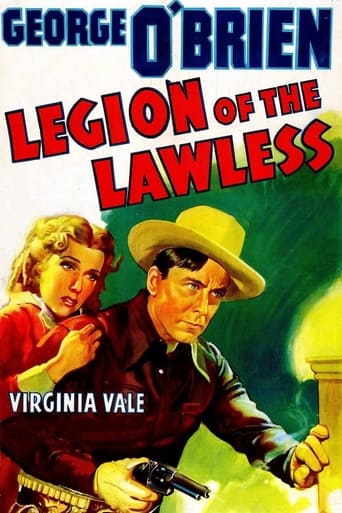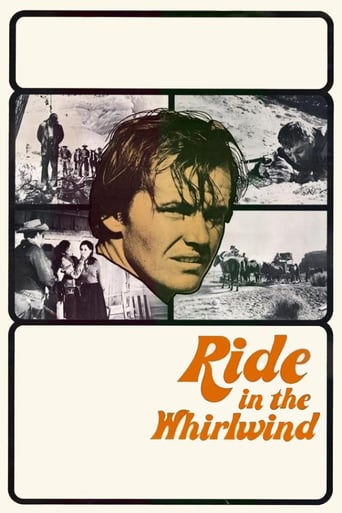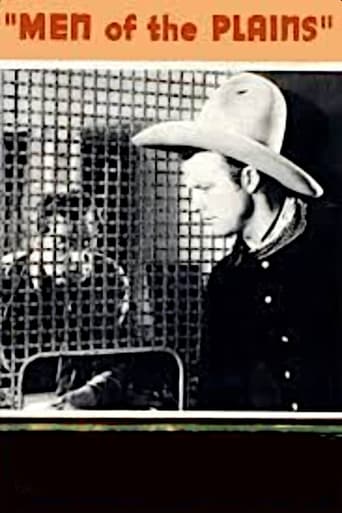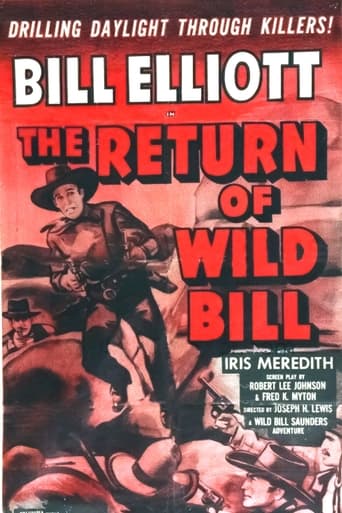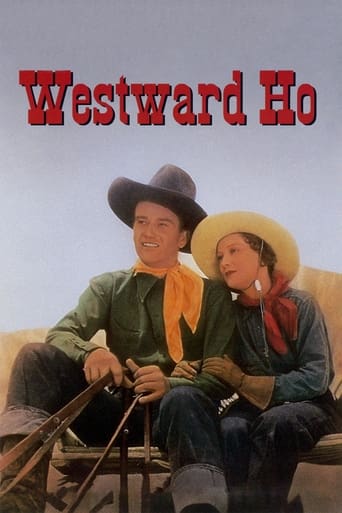
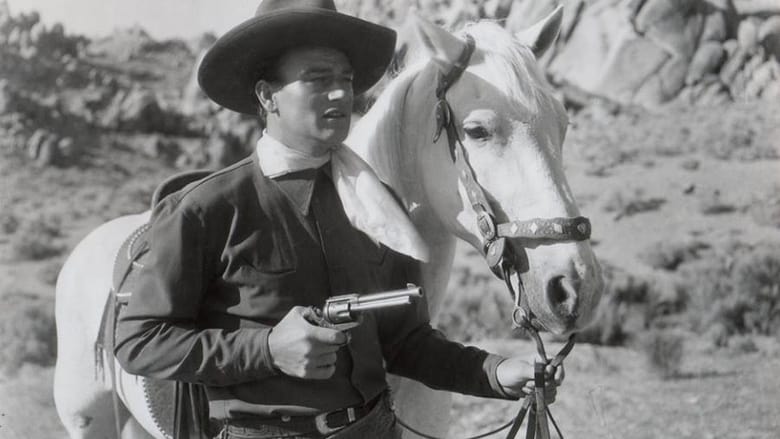
Westward Ho (1935)
Ballard's trail jumpers attack the Wyatt Company wagon train, killing young John's parents and kidnaping his brother, Jim. In post-Civil War California, John Wyatt, now a man, pulls together a vigilante posse, The Singing Riders, who all ride white horses, dress alike, and ride the trails singing and rounding up outlaw gangs. Meanwhile, John is ever on the lookout for the gang that murdered his parents As a youngster John Wyatt saw his parents killed and his brother kidnapped. On a wagon train heading West he meets his brother who is now a spy for the gang which originally did the dirty work. He and his brother both fall for Mary Gordon When Ballard and his men attack the Wyatt wagon train, they kill all except two young brothers. Twelve years later one brother John has organized a vigilante group. The other brother Jim is now part of Ballard's gang and the two are destined to meet again
Watch Trailer
Cast


Similar titles
Reviews
Republic's first film(61 min.) is said to be dedicated to the Vigilantes: "builders of the new empire of the West". That's a mighty strong statement in favor of vigilantes, who are usually regarded as usurpers of the law, usually because they feel that working through the legal system is too slow, expensive and unsure, or too sparsely present, too corrupt, or too prejudiced. I'll return to this subject later........The prelude has a very small wagon train crossing a desert. They are driving a cattle herd, which is the object of desire for an outlaw gang that descends upon them, killing all except two half-grown brothers: John and Jim Wyatt. Jim(Frank McGlynn) is kidnapped, while John(John Wayne) inexplicably is missed in the burning of the wagons. .....We then skip about 10 years to when John is a full grown man, as should be his brother, if he is alive. John has a burning desire to find the gang that killed his parents and extract revenge, and to find his brother, who may still be with this gang. Toward this end, John proposes to a committee of territorial brass, that a group of vigilantes be established to aid in the extermination of outlaws and outlaw gangs. They approve the idea, but plead there is no money to finance such. John says he will find a way to finance the establishment of such. He rides around to various cabins, asking for volunteers, collecting a substantial group(played by the Singing Riders) who supply their own firearms, a white horse, a black shirt, and a white kerchief, as their 'uniform'. These are all single men, since their mission is dangerous. How they supported themselves is not considered. They make some progress in destroying several gangs(not shown), presumably by engaging them in combat and capturing those not killed, to be turned over to legal authorities. Next, they engage Ballard's(Jack Curtis) gang. Ballard is a plump middle-aged man, who is mostly desk-bound. Eventually, they find out that he was the likely leader of the gang that killed John's parents. In fact, later, Ballard realizes that vigilante John and the Jim in his band are the two brothers from that attack. Mary Gordon, who has gotten friendly with John, overhears this when she is locked in Ballard's closet. I will leave the story of how the brothers met, and the nature of Ballard's demise for your viewing(A good copy is available at YouTube). The film includes some singing. The theme song "Westward Ho" is sung 3 times by The Singing Riders. Fortunately, It's quite a nice song. They also sing "The Vigilantes". Glenn Strange dubbed Wayne's supposed singing of "The Girl I Loved Long Ago" to Mary.......This was mostly a location shoot, in and around the Alabama Hills, near Lone Pine, in Owens Valley. The High Sierras, just to the west, are often seen in the background. .......Returning to the subject of vigilantism or something closely resembling it which is present in many westerns, yet is generally frowned upon by the legal establishment. However, there are cases, such as the one in this film, where the legal establishment approves of the actions of a vigilante group or person. A famous historical example is the San Francisco Committee of Vigilance, active at times during the early years of the gold rush, when crime was rampant and the population exploding so fast that official law enforcement couldn't keep up with it. Vigilantism may or may not include some summary executions or other punishments of captured villains, or may involve property destruction as a form of vengeance. In summary, depending on the particulars of the situation and the scope of the handling of the captured, vigilantism may sometimes be the best way to deal with a crime situation.
This is a pretty run of the mill John Wayne B-western of the 1930s with one major exception. Like his few 'Singing Sandy' films Wayne made during this era, the producers of this movie decided to make Wayne a singer---even though his singing voice was apparently rather scary. So, they dubbed him with a singer a bazillion octaves lower than Wayne's real voice--and the result is absolutely hilarious.As for the rest of the film, it had a moderately interesting plot. It begins years earlier and Wayne is a young boy going across the prairie in a wagon with his pioneer family. The group is attacked by bandits and the adults are all killed. Wayne is assumed dead and his younger brother is adopted by the bandits. Now, years later, Wayne still is searching for his lost brother as well as heading a crusade of SINGING vigilantes on their quest to rid the west of gangs of thieves. Naturally, being a movie, eventually Wayne and his long-lost brother end up on opposite sides--neither knowing the identity of the other.While the plot is silly, it was enjoyable and pretty typical in style to the bazillion Bs Wayne made through the 1930s. Fast-paced, enjoyable and entertaining.
Republic Pictures first production, WESTWARD HO features great locations and photography for the time period. A strong performance from John Wayne, who at this time has been before the camera a little over ten years. John Wyatt(Wayne)vows to avenge the death of his rancher parents at the hands of cattle rustlers. Wyatt leads a group of vigilantes hell bent on finding the gang of outlaws. When the bad guys are rounded up, to Wyatt's surprise one of the bandits is his own long-lost brother Jim(Frank McGlynn Jr.) Its been about 73 years and this picture still holds entertainment value. Although it is a shame to watch the torturous scenes some of the horses went through. The cast also features: Glenn Strange, Jack Curtis, Hank Bell, Sheila Bromley, Jim Farley, Chuck Baldra, Yakima Canutt and Dickie Jones.
Newborn Republic Pictures utilizes the solid directoral ability of Robert Bradbury, and the presence of John Wayne along with Yakima Canutt and his troupe of stuntriders to produce this strongly scripted film of 1860s vigilante efforts to rid the Far West of outlaw bands that were involved in widespread robbery and cattle rustling. Bradbury, whose skill with Westerns dates back to the early silent period, directs and edits with a solid awareness of suspense, building his typically short scenes with sparse and, at times, stilted dialogue and an eye for proper cast placement which makes excellent use of defined personalities such as Wayne, Frank McGlynn Jr., and Glenn Strange, and gives particular value to the hard-riding stunt performers, who are splendid throughout this well-made (and musical) adventure filmed in California's Owens Valley, at the base of the Sierra Nevada.


